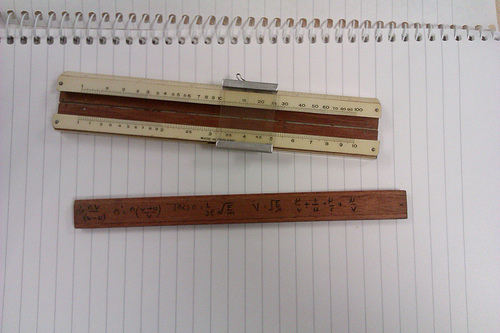This week in EDTC 400, we explored the topic of whether or not cellphones should be used in the classroom. For the first time ever, we had a three-way debate thus this posts name “The 3-Dimensional Debate” – because the debate has 3 dimensions. Kendall picked the side of cell phones should ALWAYS be banned in the classroom. Cody argued the side of NEVER banned. And Tiana argued cell phones should ONLY be allowed in high school. While I know this debate has been an ongoing debate for teachers, I would mention that yes: I was on my phone during classes in high school and I still go on my phone in university lectures. It’s not that I am not paying attention but I don’t find the need to give the teacher my full attention when they are repeating announcements over and over again or going over examples of problems which I never struggled with. I had my opinion on this topic decided even before the debate, and my decision has not changed. Keep reading to see which I side I took for this week’s debate!

ALWAYS
With the argument, cellphones should always be used in the classroom, our class discussion came up with various points such as:
- Cellphones are disrespectful to use in the classroom
- Cellphones do not have to be attached to us 24/7
- Can be used for cheating and plagiarism
- I googled “ways students use cellphone to cheat” and was met with around 691,000,000 results. Crazy, right!? With this amount of search results, it does justify why cellphones should never be used in the classroom. I read one article about “creative” ways to cheat and I was definitely appalled. Check it out for yourself!
- Notifications received can become disruptive
- Not enough storage on the phone for what the teacher may expect of students thus limited students
- Cellphones create a lack of face to face conversations instead going to the idea of online playdates
These are all valid points. In addition, Kendall provided us with articles to further justify her argument. The first article I explored at Kendall’s recommendation was, “Distracting, Disrespectful Side to Cell Phones in Class,”. The article raises concern about students becoming attached to their cellphones to a point where they become “restless” if they cannot be on their phones which distracts students from learning. This brief article also includes an experienced where two groups were given a quiz, group one had cellphones and group two did not. Can you guess which group did better on the quiz? You probably guessed right, the group WITHOUT the cellphones did do better on the quiz.

Another article focusing on this topic, “The Disadvantages of Mobile Phones in Schools” raises some concerns about using cellphones in education. Points included in this include:
- Cheating
- Cyberbullying
- One sentence in this section really concerned me, “Students have used their phones to embarrass their peers or teachers,”. I was shocked about the teacher part because never, in a million years, would I have ever thought of doing that to one of my teachers. Why do students do this? Do they cyberbully because it makes them feel powerful? Either way, it is not good.
- Read the story of Amanda Todd here
- One sentence in this section really concerned me, “Students have used their phones to embarrass their peers or teachers,”. I was shocked about the teacher part because never, in a million years, would I have ever thought of doing that to one of my teachers. Why do students do this? Do they cyberbully because it makes them feel powerful? Either way, it is not good.
NEVER
Now we move on to the “never” banned side of the debate. Points brought up in our class debate included:
- students can have their cellphones in the classroom but must place them face down on their desks or in a cellphone holder
- Here are some examples of cellphone holders (I really like the ones that allow students to charge their phones)
- Online communities such as SeeSaw and Google Classroom are easily accessible via mobile device
- A class would no longer have to wait on laptops
- Students could easily research questions they have about a topic
The first article I read which Cody provided our class with was “Cell Phones in the Classroom: Learning Tool or Distraction”. This article gave facts such as one that shocked me being “students check their cell phones in the classroom more than 11 times a day”. I was surprised this number was so LOW. I was expected this to be higher but the fact did not specific the age group or rules in the classroom. This article focused mostly on the positive aspects of using cellphones in the classroom including:
- “Incorporating digital platforms into lessons”
- “Supplementing lessons with digital materials”
- This translates to teachers being able to “include videos, new stories, online discussion groups, and more,” into their lessons.
The second article I read related to this topic was “A Blanket Ban on Cellphones in Class Would Not Be Smart”. A blanket ban is not allowing cellphone AT ALL in the school. While some schools have claimed to success for their students by using such method, there are worries about why cellphones should not be banned such as:
- Students should learn self-control
- Here the question arises: If students are not taught from a younger age when the right and wrong time to use their cellphone is via self-control, who will instill such values? Workplaces do not take away phones.” if you are on your cellphone too much you have a possibility of losing your job!
- Cellphones cans be used efficiently in the classroom
- Collaboration, communication, taking pictures of notes (that’s what my camera roll is full of between the months of September to April), accessible calendars and so much more
- Teachers can set cellphone restrictions in their classrooms if they find cellphones are too distracting for the students

ONLY
For the last dimension of this argument, Tiana argued the side in which cellphones should only be allowed in high schools. By now I’m assuming you’ve caught onto the drill so once again, here are some arguments for this side of the debate brought to you by the EDTC400 crew:
- Physical health – cellphones emit a carcinogen which young children are at risk of due the development years
- Overuse and misuse
- Can affect one’s mental health such as causing anxiety and depression
- Cellphones teach children to be more dependent on them, the younger they are exposed to them
- Preparation for adulthood
- Avoid technology all together will not prepare students for the “real world”
- Mobile etiquette and safety cannot be taught if they are banned
- Cellphones are not banned in the workplace so why would they be banned in schools?
“Adventures with Cell Phones”, this article raises points very similar to articles recommended by Cody. To avoid repetition, I will not repeat the same points as above. But I strongly urge you to read this article as it is very interesting and includes a list of educational activities to use in the classroom.

With this side of the argument, I looked up the physical development of children. I found children are still developing their fine motor skills when they enter school. At 4-5 years of age (around Kindergarten) children are increasing their artistic ability and are “able to draw simple stick figures and copy shapes such as circles, squares and large letters,”. By the ages of 5-7 years old, children are starting to write letters and numbers. They are becoming more skilled with writing utensils. If we are giving elementary students cellphones in class instead of working on these fine motor skills usually accompanied by the traditional pencil-paper method, will children not have fully developed fine motor skills at the expected times?
The Verdict
This three-dimensional post has now come to an end. While each debate participant gave very valid points to each side of their arguments, I am sticking with my side. I started on the side of which cellphones should only be allowed in high schools and I ended with that decision. I do not believe cellphones should be banned from schools because my cellphone is a huge help in my education such as being a calculator, a calendar, a note-taker, a way to contact peers and teachers and so much more. However, I do believe cellphones should only be allowed for certain ages of students – that being high school students (or grades 7-12). By this stage, students have developed the idea of what right and wrong is and will be able to decipher when the right and wrong time to use a cellphone in a class with a teacher sometimes having to intervene if the cellphones become a distraction.
Thanks for reading
- Miss. Lang

Hey Jayden!
We share some very similar views on this topic! I also began and ended with the belief that cellphones should never be completely banned, but they also should only be allowed to be used by older students have have developed the understanding and knowledge needed to use them appropriately! I love how you mentioned how young children are still developing their fine motor skills and that the use of cellphones doesn’t really support this development the same way that traditional paper and pencil work does. These are things that I think often get overlooked when it comes to considering when children should be given cellphones to use. Additionally, if we give young children cellphones, it’s unlikely that they will show interest in engaging in other activities that are necessary for healthy development, as these types of devices often become addictive and attention consuming!
Thanks for sharing some really great points!
Lauren